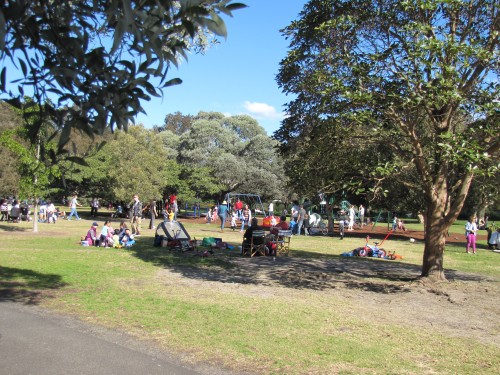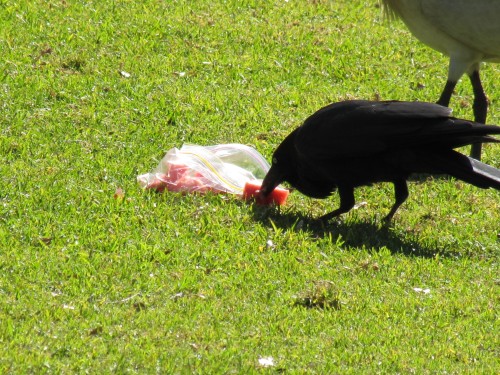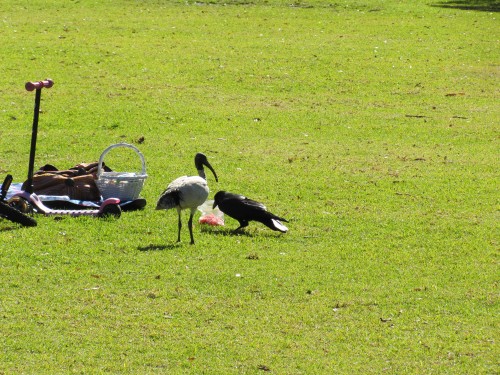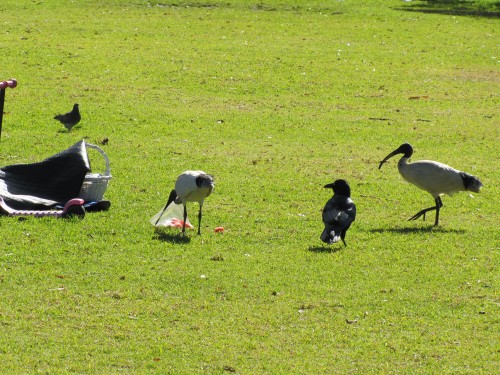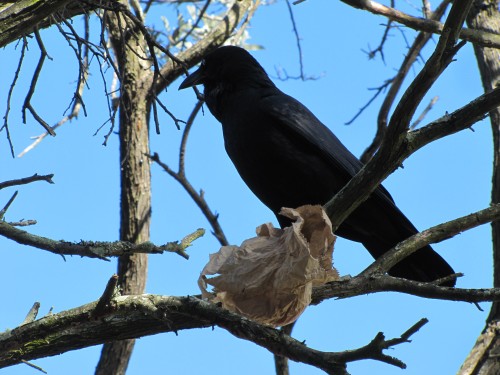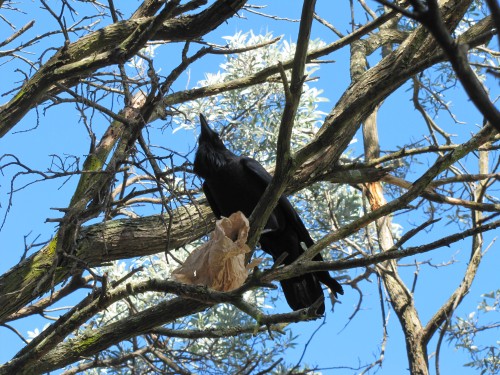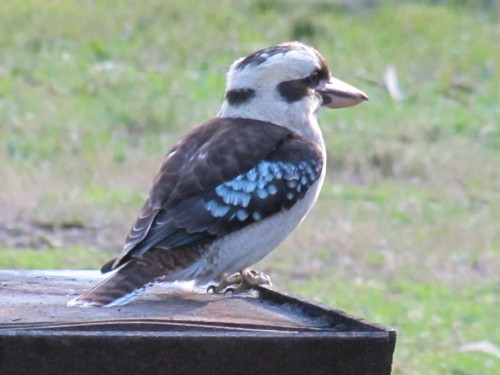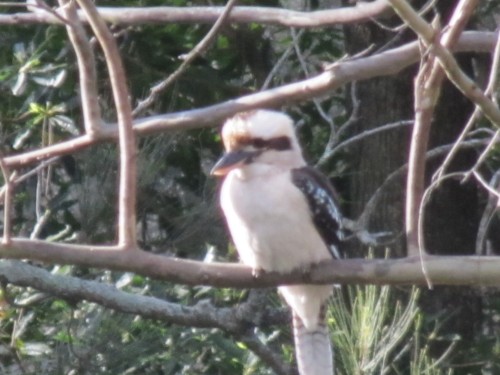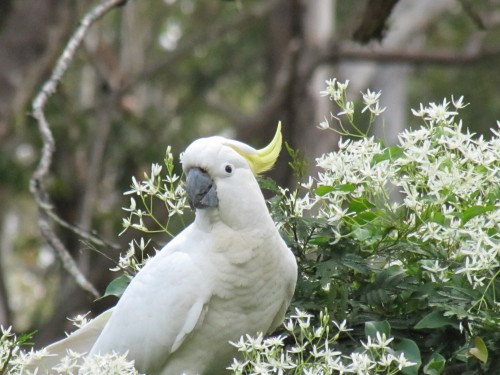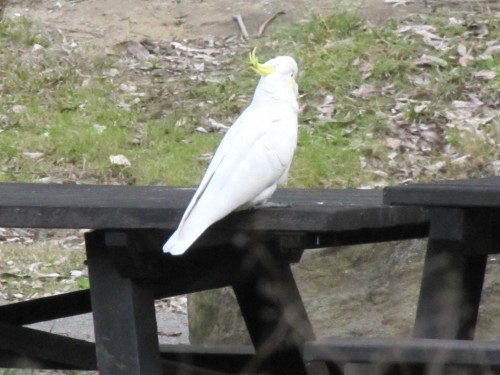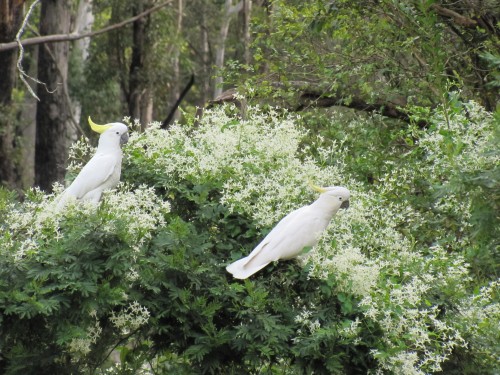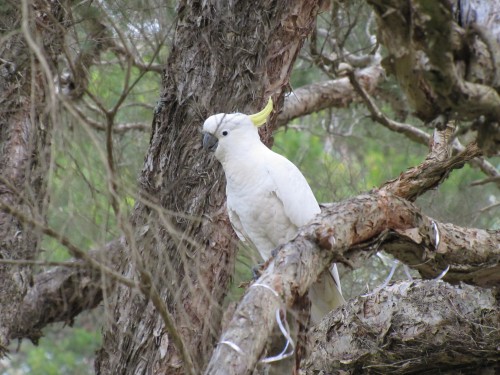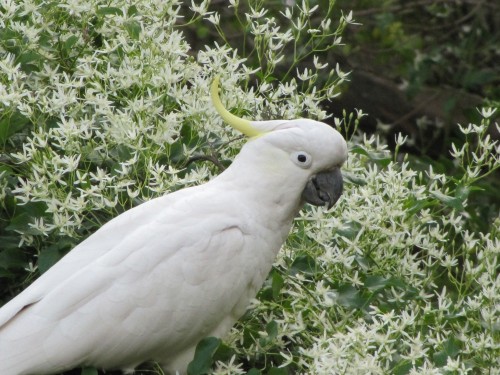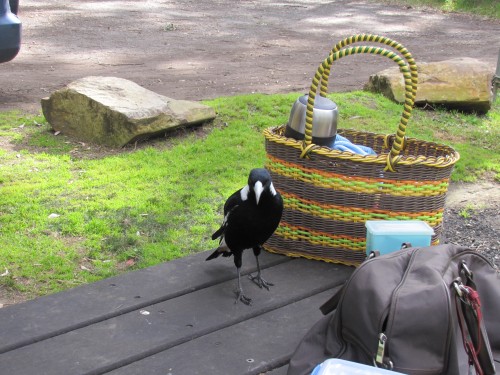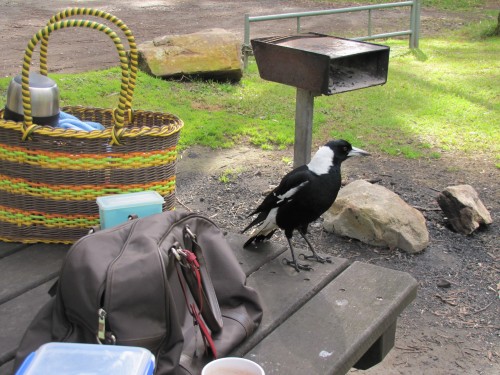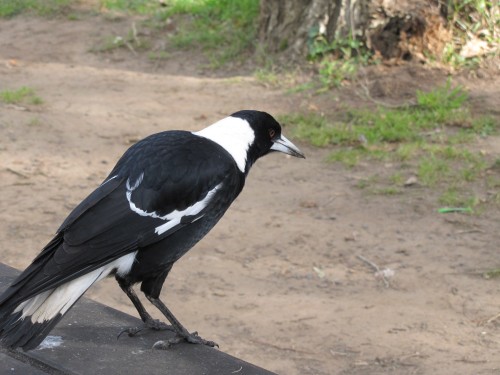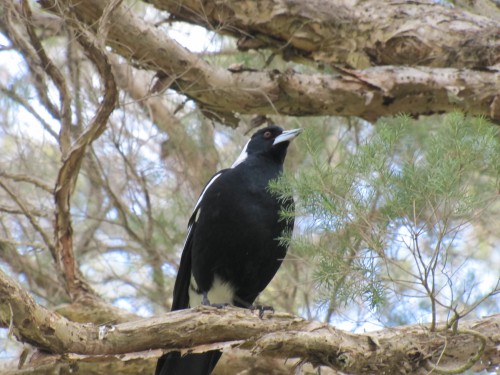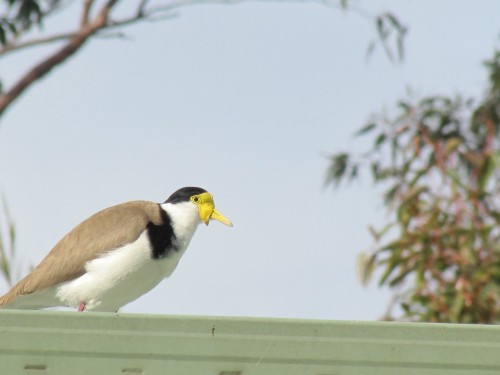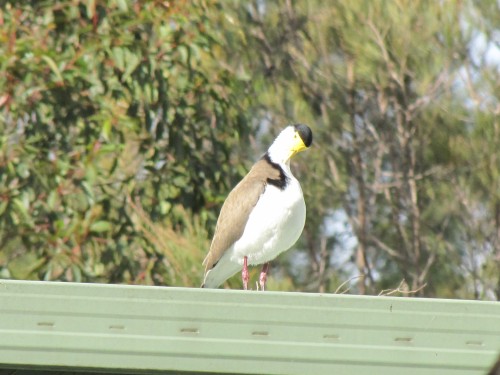Clever crows and a bossy ibis
Earlier this year we spent just over 4 weeks visiting our son and his family in Sydney. Over recent weeks I’ve shared some of the birding experiences we had while there, and when we weren’t on grandparent duties. On the very last day we had a family picnic at Centennial Park (see photo above). Some of our son’s friends were also present and the weather was brilliant; bright sunshine and just a hint of a breeze.
Over the course of the afternoon I managed quite a nice list of the birds observed in the park, including a few flying overhead. The most prominent in-your-face species were the usual suspects: Noisy Miners, White Ibis and Common Mynas. We had to be on guard all the time and some of our friends’ biscuits were snatched from packets within a metre or two from where we sat.
One species I didn’t expect to join this thieving group was the local crows, or more precisely, Australian Ravens. Now I have known that crows and ravens are sneaky, opportunistic thieves since the days when I grew up on the family farm in the mallee districts of South Australia. The local Little Ravens thought nothing of snatching a few eggs from our laying hens and ducks. On this picnic, however, I saw them in a different light; they are very clever.
In the photo above I’ve captured an Australian Raven “red handed” in the act of stealing some food from someone’s picnic. The bird was clever enough to know what was food, how to get it out of the basket and even how to open the plastic bag to get at the food. I am not sure what the food is – perhaps some cut up watermelon.
Within a few seconds, the successful heist was noticed by several White Ibis patrolling the picnic area. In the photo above the raven was still in control of the stolen food, but the ibis was about to take over. They are the “bully boys” in this situation, one that is repeated in many picnic grounds throughout eastern Australia.
It wasn’t long before an ibis had taken over eating the human picnic food (see photo above). Within a very short time several other ibises joined in the feast. Even a Rock Dove (feral pigeon) comes over to see if it can get into the act (see above, top left corner of the photo).
The raven wasn’t to be outsmarted, however. It went to another picnic spot nearby, rummaged through the human food delicacies and came up with something edible in a paper bag. To minimise the chances of being noticed and being bullied out of its catch, it flew to a nearby tree. There it was successful in holding the paper bag against the branch, opening it up and getting at the food (see photos below).
Very clever.
Observe the feathers (called hackles) on the throat. This helps identify this bird as an Australian Raven.
One hot bird?
Near the end of our recent visit to the Lane Cove National Park in Sydney I saw this Laughing Kookaburra, first on a branch of a nearby tree (see below), and then on a nearby barbecue plate.
Fortunately nobody had been to that barbecue to cook their lunch that day, otherwise we would have had one very hot bird!
On a more serious note: once several decades when cooking a barbecue lunch for my family in Western Australia a kookaburra swooped out of a nearby tree and grabbed a sausage from the hot plate. I was not happy at the time, but in recent years I delight in telling this little story.
By the way, Laughing Kookaburras are not native to WA; they were introduced in the 1890s and have spread over much of south west Western Australia. On the other hand, Blue-winged Kookaburras can be found in the northern parts of WA.
Further reading:
- Laughing Kookaburra comes to lunch – an account of another kookaburra seeking human food – also in the Lane Cove National Park a few years ago.
Sulphur Crested Cockatoos up close
Over recent days I have been sharing some photos of some of the birds seen on a recent visit to Lane Cove National Park. Today it’s the turn of several Sulphur-crested Cockatoos.
One of the birds flew in and settled on our picnic table within minutes of us starting lunch (see photo below). When it didn’t get any handouts from us, it flew over to join another few birds feeding on a clematis bush in full flower.
I love taking photos of this species, one which is widespread across much of eastern Australia. On the other hand, I realise that not all people share my love of this species. In numbers they can be a pest species. They can easily cause havoc on trees, stripping the leaves off branches. People who own houses with plenty of timber in the structure have experienced the destructive nature of these birds.
Further reading:
An uninvited lunch time visitor
On our last visit to Sydney to visit and look after our grandchildren we had a child-free day, so we took advantage of the lovely weather to visit Lane Cove National Park. This park is a wonderful natural environment along the Lane Cove River and is only a ten minute drive from my son’s home, and not much more to the Sydney Harbour Bridge.
We drove through a section of the park we had never visited before, checking out the many picnic areas along the river. We eventually settled on a pleasant spot and set up on a nearby picnic table. It wasn’t long before several species of birds came to visit us, all in the hope of a free lunch. The boldest happened to be the Australian Magpie shown in today’s photos. The magpies in the Sydney area happen to be the Black-backed sub-species. Those we have at home – Murray Bridge which is 80km SE of Adelaide, South Australia – are the White-backed version. The Western Magpie is found in Western Australia, and there are many variations due to hybridisation on other parts of the country.
Although this bird was very bold due to being very used to human visitors to the park, we didn’t take pity on him and feed it any morsels which is a good thing; human food is generally not only unsuitable for our birds and animals, it can also be dangerous and even deadly to them. Please don’t feed the birds.
In the coming days I will show more close encounters with other species of birds during our visit to this lovely park.
Further reading:
- Plenty of magpies
- Wild weather and baby magpies
- Magpies up close and personal
- Magpies up close and personal #2
A high rise bird apartment
From time to time I see some amazing, interesting or even bizarre things where birds are concerned. At first glance, today’s photos could fall into that category. Masked Lapwings (plovers) are usually found on grassy areas – lawns, ovals and roadside verges. What is this one doing on the roof of the Australian Reptile Park (near Sydney)?
Oddly enough, this is quite common behaviour with this species. In fact, they often prefer to nest up on the roof of a house, shed, office or factory in some situations. How the little hatchlings survive the drop onto the ground amazes me; they must be quite tough little balls of fluff. Perhaps all that downy fluff helps them to bounce like a tennis ball.
When you think about it, nesting on a roof is a better survival strategy than nesting on the ground like they usually do. Not only does this help minimise the threat from cats and dogs, it generally does away with interfering people and their mowers.
In this case however, it is the one safe place to nest away from the hundreds of visitors to the park every day – that’s a lot of shoes tramping around on every available bit of grass. Eggs don’t take kindly to stomping feet.
